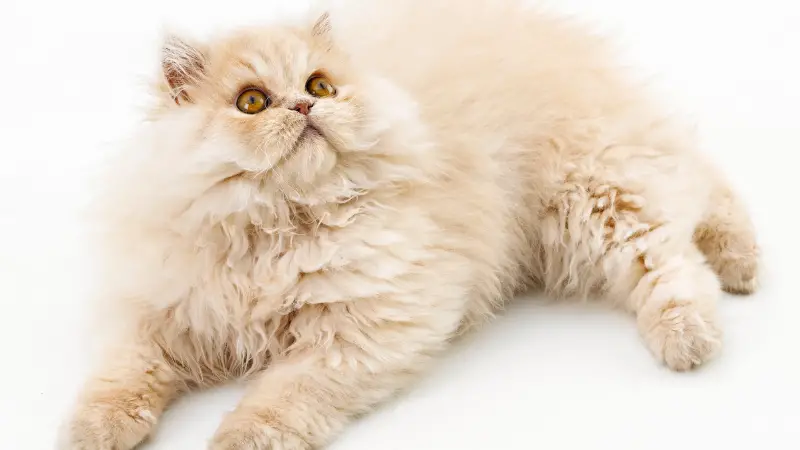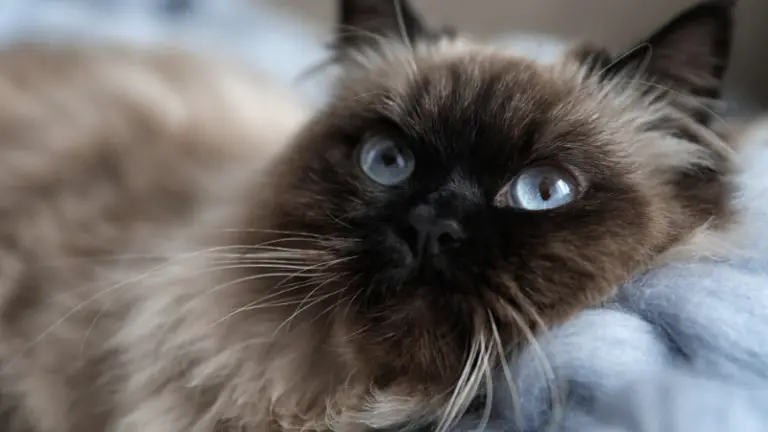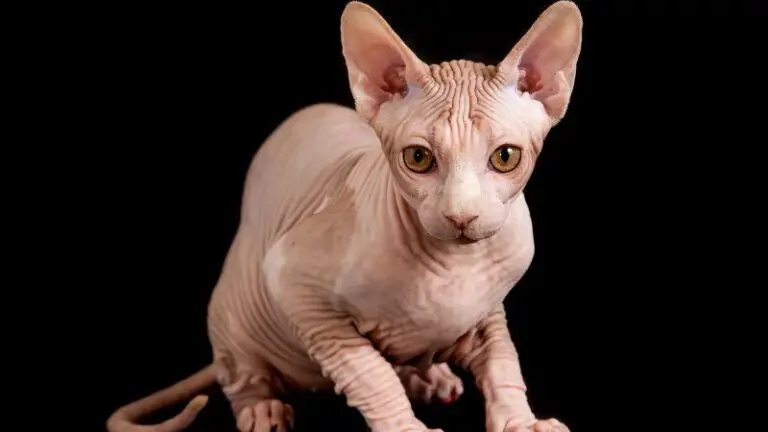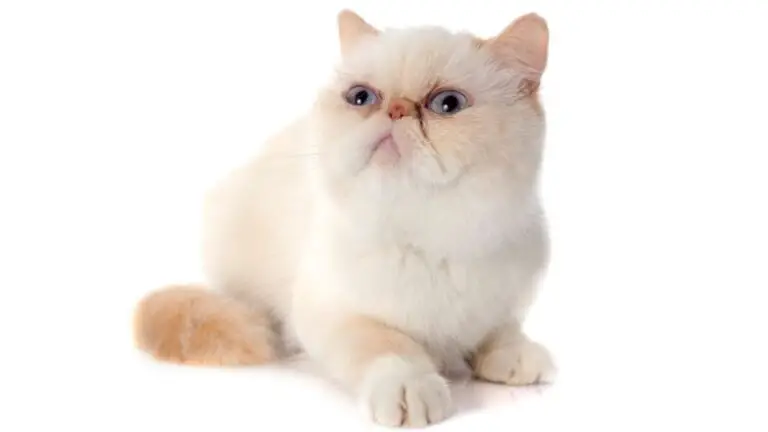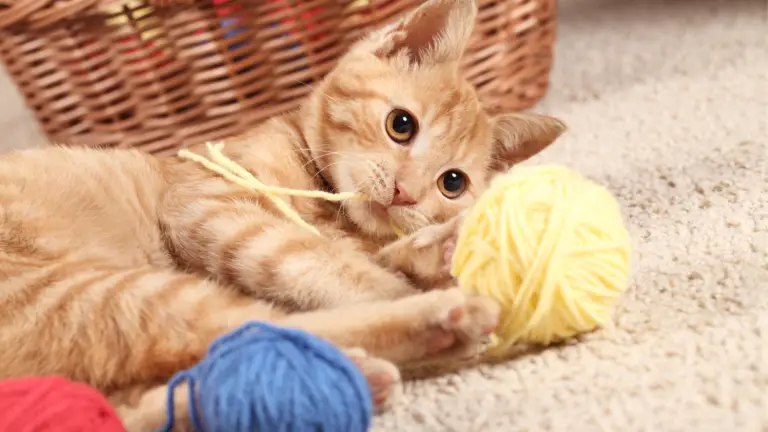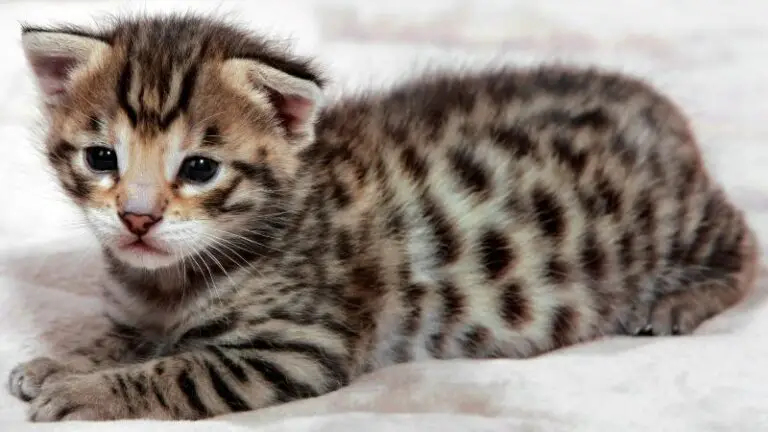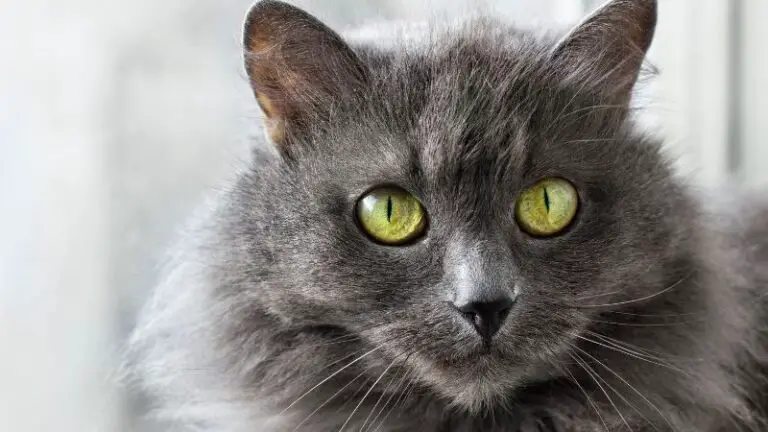PERSIAN CAT PERSONALITY AND BREED (ALL YOU NEED TO KNOW)
Are you wondering about the Persian cat personality? Native to Asia, the Persian is one of the most recognizable cat breeds, thank you to the long flowing coat.
Now bred all over the world, this cat is a real hit in exhibition circles. But, because of its beauty, it needs a lot of attention and should be brushed for a long time every day.
At a glance, the Persian cat is wasteful, available in many colors, affectionate, and meek. But, in general, this cat doesn’t have the tendency to run away.
Let’s go into more detail about the Persian cat personality and breed.
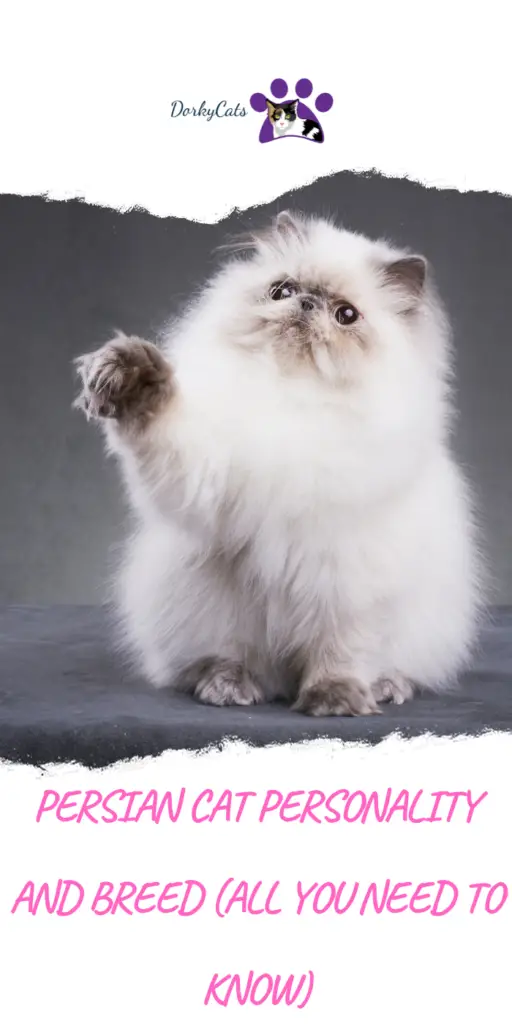
WHAT IS THE PERSIAN CAT GENERAL ASPECT AND SIZE?
From the distant Middle East regions to the United States, there is no country that the charm of the Persian cat has not conquered. The Persian is considered the most valuable of all the purebred cats.
Traditional colors are solid, but today there is an ample choice of other varieties, including cameos. In addition, along the lines of Persian descent, new colors have been introduced, like chocolate.
There is also the tabby version, but due to the length of the coat, the design is not well defined all over the body. So instead, the Persian cats present sturdy limbs, short and thick legs, and massive paws.
The Persian’s eyes are round and generally have one coppery orange color. Their eye colors make the Persian more fascinating.
From solid colors to the cameo, the Persian has no coloring limits.
▷ In the ideal standard, the build of the Persian must be compact and massive. The cat should be resting on sturdy legs and strong, with broad and round feet.
CHARACTERISTICS OF THE PERSIA CAT
| Characteristic | Description | Notes |
|---|---|---|
| In summary | Large and charming in appearance, with rather short paws and a round muzzle | |
| Personality | Relaxed, sociable, and affectionate | |
| Appearance | Large and robust, with abundant coat and flat muzzle | Present in a wide choice of colors and patterns |
| In the house | Lover of the house, suitable as a domestic cat and prefers a quiet environment | Ideal for people living alone |
| Behavior | The hunting instinct is very weak and by nature, it is not very active | |
| Grooming | It should be brushed every day, to prevent the matted coat | As for brushing, the Persians are the most demanding cats |
| Most common health problems | Problems Subject to renal polycystic disease, a progressive disease that appears in old age | Thanks to DNA tests, it is now possible to check all the specimens that have been born |
| Size | Medium-large, from 3 to 6.5 kg. | |
| Ears | Small, well-spaced, close to the attachment, and rounded at the tip, slightly inclined forward | |
| Eyes | Large and round | |
| Ears | Small, well-spaced, close to the attachment, and rounded at the tip | |
| Head | Massive, round, broad forehead, pronounced stop of the nose and full cheeks | |
| Paws | Short and muscular; feet round and large | |
| Coat | Long, very thick, silky, raised from the body, and more abundant on the neck, shoulders, and legs | |
| Allowed colors | All solid colors, tabby, chinchilla (silver-white base with darker tips), party color, smoke, two-tone, color point |
The Persian cat color spots or brands are well outlined. In the black areas, it shouldn’t be any white hair and vice-versa.
The Persian cat tail is relatively short and thick, not very tapered.
▷ The cream blue is one of the more loved varieties.
WHAT IS THE HISTORY OF THE PERSIAN CAT?
The first Persians in Europe were highly regarded for their long white coats. The first specimens were imported from Persia (now Iran) to Italy and Turkey to France In the early seventeenth century.
Comparing the vintage portraits of these cats with the scenes of modern exhibitions, it is possible to note that their appearance has changed little.
Today they have a more abundant coat and a larger head, but the most evident change is the flattening of the muzzle, with the equally apparent compression of the nasal area. This last characteristic can create difficulties breathing and even feeding problems.
The Persians feed differently from the other cats, picking up the pieces of food with the lower part of the tongue.
WHAT IS THE ORIGIN OF THE PERSIAN CAT?
Only around 1500 DC, it was heard for the first time in Europe of an extraordinary example of a cat covered with a thick coat and coming from the distant regions of Turkey, even if it took longer than a century before we could have more factual information and find its diffusion in the Old World.
The humanist Peter Della Valle was the first to bring two specimens of long-haired cats to Italy, from which they would be subsequently derived the current Persian and Turkish Angora.
In some of his works, the scholar dedicated several writing pieces to these animals, describing the Persians as cats with gray and very long, silky, and shiny coats.
After the import by Della Valle, the Turkish cats left for the other European states, and in a short time, they first conquered France and then Great Britain.
A long period followed in which these cats became, to all effects, part of the European aristocracy, fondled by nobles and royalty.
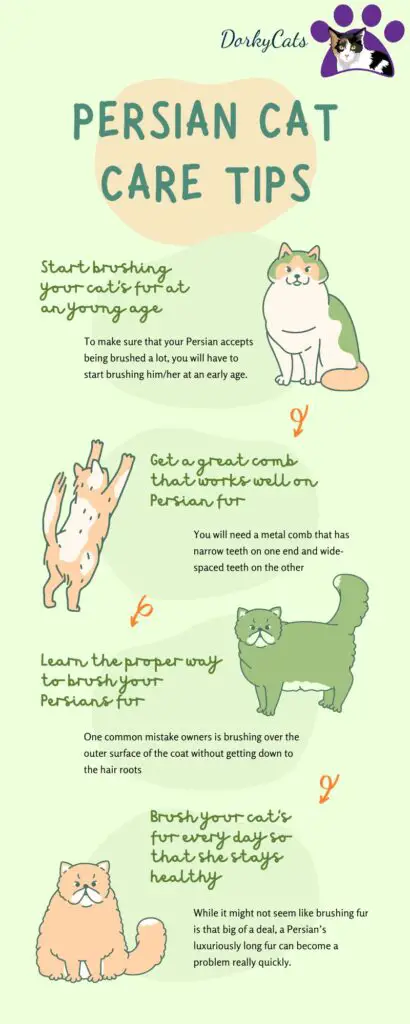
At this stage of their history, It did not yet exist a distinction between Turkish and Persian Angora. Indeed, the two were paired indistinctly, and their main feature was the long white coat.
To see the two breeds separated and differentiated, it is necessary to wait until 1871, a historical date in the feline world.
The black variety of the Persian was one of the first to be recognized.
Just that year, Harrison Weir, an eccentric gentleman from London, organized the first major exposition of cat breeds, with more than 170 breeds coming from all over the world.
Among all the exponents, the Persian was the one who received the most awards and, from that moment, it began to take form the first distinction projects of Persian, characterized by the massive build and small round ears.
It differed from the Turkish Angora, which had a long-limbed appearance and long, flat-pointed ears. Over time the breed became so popular in the UK that even Queen Victoria owned two specimens.
In the early twentieth century, it was settled that Persian, Angora, and long hair cats coming from distant Russia are part of one category of long-haired breeds, an arrangement still in force today in all international feline associations.
NORMOTYPE OR HYPER TYPE?
There are two different varieties of Persian. The normotype Persian, also called “doll face,” is a cat that presents a muzzle fitted with a slightly protruding nose.
On the other hand, the hyper-type Persian is more widespread, with a flattened nose and the nose and the lower part of the muzzle in the shape of an overturned v.
A Hypertypical Persian is also known as an American Persian.
REPRODUCTION OF THE PERSIAN CAT

With Persian cats, reproduction is rather late. The female reaches sexual maturity generally after ten months of age and the male after the year. The first signs of pregnancy occur after three weeks; between the fourth and fifth-week fetuses are already formed and are about 2.5 cm in length.
Females like the human presence very much during childbirth.
▷ The kittens are fine if the coat is fluffy and soft and the eyes are clean.
In the Persian breed, the cat increases significantly in weight only towards the end of gestation. This is because the expectant mother needs a diet based on vitamins, calcium, and protein foods, to provide the body with the necessary energy.
✔ NEONATAL FIRST AID
If the vet is not present at the time of the delivery of your Persian cat and if you notice that some of the kittens are not breathing, you can try to intervene by holding it in your hand and giving a blow from the top to the low to activate the lungs.
THE DELIVERY OF NEW KITTENS BY PERSIAN CATS
When the big moment approaches, the cat begins to lick her genitals to relax the muscles for dilation. The waters break when the contractions get closer together and start the first thrusts.
AN ADVICE
Shortly before giving birth, the cat’s body temperature is lowered by a degree, and breathing becomes like panting but don’t worry about the mommy cat. If she is purring and looks quiet, she’s doing everything as nature has arranged.
Before the kittens, the first thing to come out is a part of the amniotic sac. When the expulsion of the kitten occurs, the mother immediately cuts the umbilical cord, biting it and activating the breathing of the little one by licking him with force.
When the mother cat has given birth to the last puppy, she will eliminate the placenta by eating it, but if that doesn’t happen, check that there are no residues left inside.
Generally, it is advisable always to assist the cats at first birth: inexperience could lead the Persian cats to fatal mistakes.
PERSIAN CAT HEALTH CARE
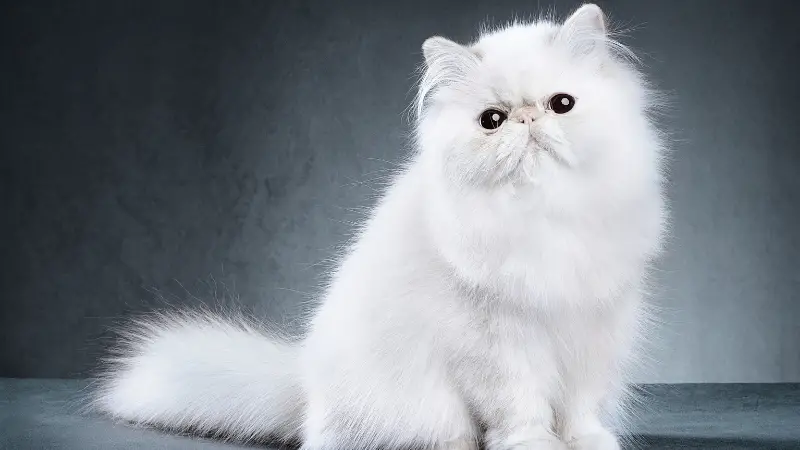
The Persian is a particularly delicate cat and requires constant attention to avoid a series of pathologies that could also turn out deadly.
Very delicate in the stomach, he is predisposed to the contraction of various fungi and parasites. Among them is cutaneous mycosis, the condition in which pathogenic fungi overcome the body’s defenses and attack the skin, feeding on hair and skin.
If the cat contracts it, he or she will present hairless areas around the body with visibly reddened skin.
This pathology may not manifest any symptoms early on; if not caught in time, it can infect others, animals, and even man. However, it is easy to care for with deworming therapy orally or with external use.
THE FILARIASIS
It is a disease to which the Persians seem to be more exposed than other breeds. Heartworms are small whitish worms that are transmitted through mosquito bites.
Once this parasite enters the cat’s body and settles the heart and pulmonary arteries, the larvae become adults after four months, a period in which it is practically impossible to notice changes in the state of health of the Persian. Still, when they reach the heart and lung region, the problem becomes severe.
The cat s tired, apathetic, coughs, and may experience respiratory crises or heart failure.
AN ADVICE
Parasitic forms and fungi can be more dangerous to the Persian than you think. They can, in fact, be the cause of harmful ear infections, and they would damage the animal’s hearing.
PERSIAN CAT PERSONALITY
The Persians are famous for their peaceful nature and the boundless affection they can give to their master. The round nose, large eyes, and plush body do nothing but confirm how much this cat knows how to be sweet.
He is an eternal kitten who has always wanted to play and is always available to brighten the days of humans simply with his presence. He lives well in the apartment and does not need large spaces: just one comfortable bed to do his naps and a place to love his favorite human.
The Persian does not need expensive toys but just the presence of the master.
▷ Don’t leave kittens alone with toys that have dangerous lanyards.
The Persian cat is the ideal life partner for older adults, children, and, in general, all those who can dedicate the time needed for the treatment it requires in exchange for a sincere and profound friendship.
✓ The Persian is unable to survive without the care of its owners.
The meow of the Persian is delicate and never intrusive. This cat doesn’t like climbing but prefers the pampering of his favorite human and a comfortable armchair. Persian cats are hardly aggressive or nervous.
AN ADVICE
The Persian is absolutely not suited to being alone at home for hours and therefore is not suitable for those who are supposed to stay away from home for a long time.
THE PERSIAN CAT IS A BAD HUNTER
The particularly meek character of the Persian cat is the result of a series of selective programs to stabilize the most suitable disposition possible to live in the luxurious and delicate aristocrats’ homes.
This same characteristic, however, deprives him of the typical predator aptitudes.
AN ADVICE
The Persian, even as a kitten, does not constitute a danger for birds and other small animals; indeed, their presence particularly intrigues the Persian cat, and if these do not prove aggressive in toward them, a beautiful and unique friendship can be born!
HOW TO TAKE CARE OF A PERSIAN CAT

To ensure that the proverbial beautiful appearance of the Persian remains unchanged in time, it is necessary to give him daily attention and care. For example, the Persian cat’s eyes should be cleaned daily since they tend to have excessive tearing.
A specific product can be used. Alternatively, you can use cotton moistened with lukewarm water or a chamomile infusion. The same remedy can also be adopted for the hygiene of the ears.
AN ADVICE
Like all other cats, the Persian loves fresh air, so he will be pleased if you continually keep a window that is at least partially open.
The soft coat should be combed daily alternating toothed combs wide to narrow, perfect for removing actual dead hair. The bath should be done twice a month, using hot water, a neutral detergent, and much kindness.
AN ADVICE
Before the bath, remember to comb the coat of your Persian carefully to prevent felting gives rise to annoying knots. After the bath, the kittens must be perfectly dried.
THE PERSIAN CAT DIET
Persian is somewhat delicate in its stomach, as we have already mentioned, and it is
therefore of fundamental importance to take extreme care in his food choice.
Packaged food is fine, but it must always be of excellent quality and should be alternated with fresh foods such as boiled vegetables, rice, white meats, and steamed fish to provide him with all the necessary nutrition.
Do not forget to provide fresh water at all times.
AN ADVICE
Do not give your Persian the tap water because it is richer in salts and chlorine, which are harmful in the long run for his kidneys.
The Persian is, without a doubt, a cat with refined tastes that cannot be satisfied with cheap food.
✓ DELICIOUS RECIPES
If you want to delight your Persian with a homemade lunch, try this recipe. First, blend the previously cooked chicken, which you will mix with a bit of water to make the mixture creamier; adjust with parmesan and a drizzle of oil.
FREQUENTLY ASKED QUESTIONS
What is the price of the Persian cat?
A Persian cat can be pretty expensive; the price range can be between $500 and $5000. But, of course, the price depends on the breeder, the purity of the breed, and the kitten’s age.
What is the Persian cat’s lifespan?
Persian cats can live up to 18 years. The length of their life depends on how well they are cared for, the food quality, and other environmental factors.
Do Persian cats have behavioral problems?
Persian cats are adorable and friendly but require attention from their owners. Otherwise, they can become vocal or try to attract attention in other ways. However, they are really calm and friendly cats.
Do Persian cats like to cuddle?
Persian cats love cuddling sessions with their humans. They love to cuddle and nap near their owners. If you want a cat that lets you touch and pet him, then the Persian cat is the right choice.
Are Persian cats well-behaved?
Persian cats are well-behaved and calm cats, and for this reason, they are good life companions for older people and children. Persian cats are rarely aggressive or problematic. However, they require a lot of care.
Are Persian cats friendly?
Persian cats are amiable and sweet cats. They are known to be calm and lovable cats, affectionate toward people, and love the company of humans.
Can Persian cats be left alone?
Persian cats cannot be left alone for many hours. Those cats require attention and suffer from staying home alone. Those that know their house is empty when they go to work should not consider getting a Persian cat.
Are Persian cats moody?
If they are treated well, Persian cats are generally not moody but relatively calm. However, you can see them become moody if external factors annoy them.

